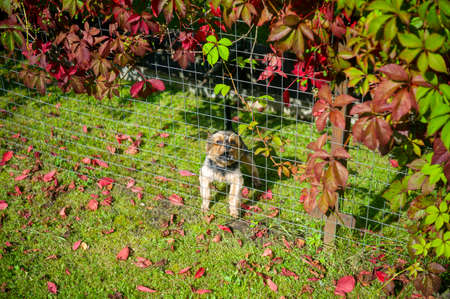Introduction: Setting the Scene in a Typical British Garden
Step outside into any typical British back garden and you’ll find a delightful patchwork of lawns, flowerbeds, and winding paths bordered by all sorts of fences and hedges. These boundaries are more than just markers of where one garden ends and another begins; they shape the daily lives of families and the wildlife that quietly shares our space. For many UK households, a well-chosen fence offers peace of mind—keeping little ones and beloved pets safely inside while providing privacy from neighbours. Yet, nestled beneath the roses or rustling through the grass after dusk, native creatures like hedgehogs depend on our choices too. Striking the right balance between garden security and welcoming local wildlife is both a modern challenge and an invitation to nurture our connection with nature at home. In this article, we’ll dig into why these borders matter so much, exploring how they protect our loved ones while still opening gateways for the prickly visitors who need them most.
2. The Importance of Garden Security
When we think about our beloved gardens, its natural to picture them as safe, inviting spaces where families can play and plants can flourish. In the UK, garden fencing is more than just a decorative boundary—it plays a vital role in creating this secure environment. Traditionally, homeowners have installed fences for several important reasons, each connected to the needs of family life and the unique character of British neighbourhoods.
| Reason for Fencing | Purpose | Typical Considerations |
|---|---|---|
| Privacy | Creating a secluded space away from prying eyes | Height and design, local council regulations |
| Child Safety | Ensuring children can play freely without wandering off | Sturdy construction, smooth edges, secure gates |
| Pet Protection | Keeping pets safely within the garden boundaries | Gap size, fence height, material durability |
| Deterring Unwanted Visitors | Preventing access by intruders or stray animals | Security features, locking mechanisms, visibility over the fence |
The Balance Between Family Needs and Wildlife Friendliness
For many British families, a garden is not only an outdoor extension of their home but also a place where memories are made. Whether it’s little ones chasing butterflies on a summer’s day or a beloved dog enjoying a sniff around the flowerbeds, fencing offers peace of mind. At the same time, traditional fencing solutions may inadvertently exclude some of our most cherished garden visitors—like hedgehogs. As we think about security for our children and pets, it’s equally important to remember the secret lives unfolding just beyond our fences. Balancing these needs means considering both robust protection and gentle accessibility within our garden boundaries.

3. Hedgehogs in British Gardens: Our Prickly Neighbours
Hedgehogs are one of Britain’s most beloved and iconic garden visitors, often spotted snuffling through flowerbeds or rustling under shrubs at dusk. Beyond their charming appearance, these prickly neighbours play a crucial ecological role in our gardens. Hedgehogs are natural pest controllers, feasting on slugs, beetles, caterpillars, and other invertebrates that might otherwise nibble away at your prized plants. Their presence helps maintain a healthy balance in the garden ecosystem, reducing the need for chemical pesticides.
Hedgehogs are nocturnal creatures with surprisingly large nightly ranges; they can travel up to two miles each night in search of food and mates. For this reason, access between gardens is vital to their survival. Fencing and solid boundaries can easily become barriers that fragment their habitats and restrict their movement, making it difficult for them to find enough food or safe nesting sites. In the UK, where urban development has made wild spaces scarcer, gardens connected by accessible boundaries form essential wildlife corridors for hedgehogs.
By understanding hedgehog habits and needs, we as families can make mindful choices about our garden fencing. Simple actions like creating small holes—known as ‘hedgehog highways’—in fences allow these endearing mammals to pass freely between neighbouring gardens. It’s a wonderful opportunity for children to learn about local wildlife and take an active role in nurturing nature right on our doorsteps.
4. Fencing Solutions: Balancing Protection and Access
When creating a garden boundary, it’s natural for families to prioritise safety and privacy. Yet, as many British parents and children have discovered during their own garden adventures, it’s equally important to ensure our fences don’t become impassable barriers for wildlife—especially our beloved hedgehogs! Striking this balance can be a real adventure in creative problem-solving, and plenty of UK communities have already paved the way with clever, practical solutions.
Practical Fencing Options for Family Gardens
Let’s explore some popular fencing types, along with their pros and cons when it comes to both security and wildlife friendliness. Whether you’re safeguarding little ones or hoping for nocturnal visitors in your borders, there’s an option for everyone:
| Fencing Type | Family Security | Hedgehog Accessibility | Community Inspiration |
|---|---|---|---|
| Solid Wooden Panels | High – Offers privacy and safety | Low unless modified (hedgehog holes needed) | Bristol families add “hedgehog highways” at ground level |
| Closeboard Fencing with Gravel Boards | Very High – Sturdy barrier for children & pets | Easy to adapt – Drilling small holes keeps access open | Cotswolds villages run annual “hedgehog hole” competitions |
| Picket or Palisade Fences | Moderate – Suitable for front gardens or shared spaces | Good – Natural gaps allow hedgehog movement | Kent parents choose these for visible play areas and wildlife watching |
| Lattice or Trellis Topped Panels | Good – Adds height without feeling oppressive | Adaptable – Lower section can include wildlife access points | Manchester gardens pair trellis panels with climbing plants and hedgehog doors |
| LIVING HEDGES (e.g., Hawthorn or Beech) | Moderate – Some privacy, softer boundaries for kids | Excellent – Naturally porous for creatures great and small! | Surrey schools plant living fences as green corridors for local hedgehogs |
Clever Ways to Combine Safety and Wildlife Access
If you already have secure fencing in place, don’t worry—there are ways to retrofit your existing boundaries to help hedgehogs thrive:
- Add a “Hedgehog Highway”: Cut a 13 x 13cm hole at the base of your fence. This is big enough for hedgehogs but too small for most pets.
- Create Wildlife Corridors: Position planters, logs or stones near access points so creatures can shelter as they move between gardens.
- Neighbourly Cooperation: Chat with neighbours about linking up your wildlife-friendly routes—a whole street can soon become a hedgehog haven!
- Sensitively Place Gates: Choose gates with a small gap underneath or fit a removable panel that allows safe passage after dark.
A Family Project Rooted in Nature’s Wisdom
This balancing act between protection and accessibility isn’t just about fence panels—it’s about nurturing young curiosity and respect for all life. By involving children in these choices, whether measuring up a “hedgehog highway” or planting a living hedge together, we grow not only safer family spaces but also a sense of stewardship that lasts a lifetime.
5. Creating Hedgehog Highways: A Community Effort
If you stroll through a typical British neighbourhood at dusk, you may spot hedgehogs bustling between gardens in search of food and shelter. However, modern fencing can unintentionally block their nightly wanderings. By making small gaps—just 13cm by 13cm—in your garden boundaries, you open up vital “hedgehog highways” that connect habitats across fences and walls. These tiny portals become gateways to adventure, not only for prickly visitors but also for families eager to nurture a love of wildlife together.
Taking the time as a family to create a hedgehog hole is a simple yet meaningful weekend project. Children delight in measuring out the gap, carefully sawing or digging with adult help, and proudly decorating signs to let neighbours know it’s “hedgehog-friendly.” It’s an activity that gently weaves environmental care into everyday life—teaching little ones about empathy for animals and the importance of biodiversity right on their doorstep.
But the magic doesn’t stop at your own fence line. When you chat over the garden gate with neighbours about your new hedgehog hole, you sow seeds of community spirit. Conversations bloom as you share tips, swap stories of hedgehog sightings, and encourage others to join in. Before long, a patchwork of connected gardens emerges, forming safe passageways for local wildlife throughout your street or village.
Neighbourly cooperation is at the heart of this effort. Some communities even organise “Hedgehog Highway” days where residents come together—armed with saws, sandwiches, and plenty of laughter—to collectively create gaps in their shared boundaries. In this way, a simple act becomes a celebration of togetherness and shared purpose.
Supporting these prickly visitors brings unexpected rewards: children learn teamwork and responsibility; adults rediscover the joy of neighbourly exchanges; and everyone gains a sense of pride in helping Britain’s beloved hedgehogs thrive. Like climbing beans weaving through trellis, our efforts entwine us closer—not just to nature but to each other.
6. Getting Everyone Involved: Inspiring Young Gardeners
Bringing children into the garden fencing conversation isn’t just about giving little hands something to do—it’s an invitation for them to become stewards of both your home and the natural world just beyond your fence. When families work together to design, build, and maintain garden boundaries, children learn valuable lessons in responsibility, curiosity, and compassion for local wildlife such as hedgehogs.
Start with Planning Together
Begin by inviting your children to join in the planning process. Sit down with a simple map of your garden and let them draw or place ideas about where fences and hedgehog-friendly gaps might go. Talk about why certain areas need to be secure—perhaps to keep pets safe or protect precious plants—and where you can create “hedgehog highways” that allow these spiky visitors to roam safely between gardens.
Hands-on Building Fun
Once your plans are in place, involve the youngsters in age-appropriate building activities. Older children can help measure wood panels or dig small holes for posts under supervision, while younger ones can pass tools, hold stakes, or paint fence panels with weather-proof colours. Explain how leaving a 13cm x 13cm gap at the bottom of the fence helps hedgehogs travel, and let them decorate signs marking these wildlife passages—making it a creative learning moment!
Ongoing Care and Wildlife Watching
Caring for garden boundaries doesn’t stop once they’re built. Assign regular “garden patrols” where children check that hedgehog gaps remain clear of debris or blockages. Encourage them to spot animal tracks, look for tell-tale hedgehog droppings, or refill water dishes left near access points. Keep a family logbook of wildlife visitors, which nurtures observation skills and a growing sense of wonder for nature right on your doorstep.
Nurturing Respect and Responsibility
By giving children ownership over parts of the boundary project—from planning to maintenance—you nurture their sense of responsibility not only for your property but also for Britain’s beloved hedgehogs and other garden creatures. These shared tasks cultivate empathy and inspire future generations to care for green spaces with respect and joy.
A Growing Legacy
Involving young gardeners in making boundaries safe yet wildlife-friendly creates cherished memories and sows seeds of environmental stewardship. With each new gate painted or gap cleared, you’re building more than just a fence—you’re nurturing curious minds and kind hearts ready to protect nature for years to come.
7. Conclusion: Growing Together for a Wilder, Safer Garden
As we tend to our gardens and consider the boundaries that keep our families safe, its inspiring to remember that our green spaces can nurture both people and wildlife. Thoughtful fencing isnt just about keeping things out or in; its about weaving together security with kindness, ensuring that our children have a safe place to play while the hedgehogs and other wild friends find passage and sanctuary. When we make small adjustments—like creating hedgehog highways or choosing living fences—we invite a little more wildness into our lives, sparking curiosity and empathy in our children. These choices help our gardens flourish as vibrant, shared spaces where stories of nature unfold. By growing together with purpose and care, we foster not only safer gardens but also richer memories, teaching the next generation to cherish all the creatures who quietly call our back gardens home.

